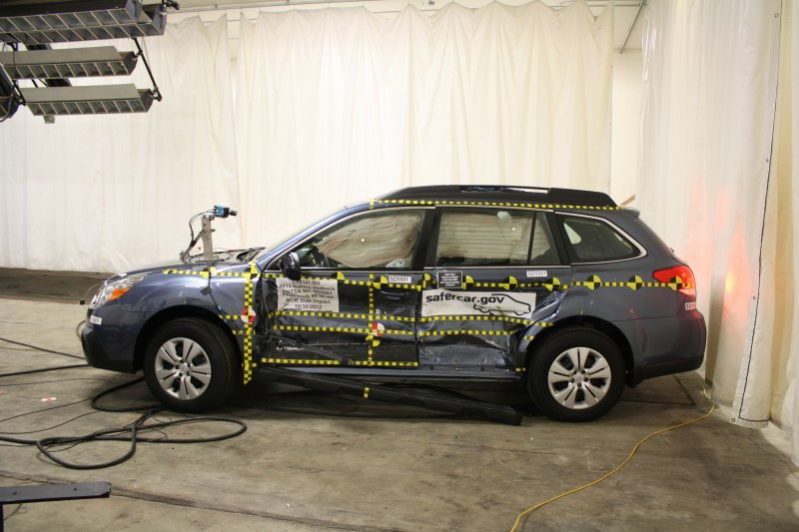 Who
Who
Lindsey Schmidt, 29 and 4 months pregnant, Owen Schmidt, 6, Weston Schmidt, 4, Kaleb Schmidt, 21 months were killed in a collision while driving in a green 2014 Subaru Outback.
The collision occurred with a 25-year old man from Maneno driving a grey 2002 Chevrolet S10. The man survived. The collision occurred around 8:30 AM on Monday, July 24th, 2017 at the intersection of Yates Avenue and Corning Road in Beecher, Illinois (Will County, Washington Township). Lindsey and Kaleb died at the scene; Weston died Tuesday evening at 5:55 PM and Owen died at 2:39 AM Thursday. The children are survived by their father, Lindsey’s husband.
How
Per reports from the Chicago Tribune and ABC 7 Chicago, Lindsey was driving her boys to VBS (vacation bible camp) at Trinity Lutheran Church when the crash occurred a block from their home in Beecher, Illinois. They were northbound on Yates Avenue and were struck on the driver’s side by the male driver, who was traveling east on Corning Road and did not yield at the stop sign.
Police estimate the crash occurred at 55 mph per the sole survivor of the collision, who stated that his cruise control was set at that speed. The collision forced both vehicles off the road into a nearby field. The pickup driver was taken to St. James Hospital and later to Christ Medical Center where he was described as in stable condition; he underwent minor surgery due to a large arm laceration.
Lindsey and Kaleb were pronounced dead at the scene. Kaleb’s brothers were transported to St. Margaret Hospital in Indiana and later airlifted to Chicago. Weston was pronounced dead in Comer Children’s Hospital in Chicago at 5:55 PM on Tuesday; he had been placed on life support the previous day. His older brother Owen was placed in a medical coma and passed away two days later at 2:39 AM Thursday.
Per a minister at the church, Lindsey had lost a brother to a car crash in the same town 12 years ago. The pickup driver was initially cited for not yielding to a stop sign, but the charges were dropped to avoid double jeopardy complications while investigations probed the possibilities of more serious infractions (e.g., chemical inebriation or phone use). He was described as cooperative with the authorities, and said he had been on his way to work and did not know the area.
Why

This is another in an endless line of tragedies in our butcher-worthy road network. Reviewing the facts as presented, it seems clear that the man driving the S10 was responsible for the collision. We don’t yet know how he was distracted (e.g., a phone, drugs, alcohol, fatigue, daydreaming…), but we can analyze the crash and the larger ramifications of the tragedy.
The Outback
The ’14 Outback is one of the safest cars on the road, and one of the best vehicles you could ask to be in before an imminent side impact. It received a “good” score overall and in all subcategories in the IIHS side impact test as well as a 5 star NHTSA side score. The side impact intrusion resistance ranged between 15 and 17.5 cm, which is one of the best side impact scores you can get in a station wagon even in 2017. It was a good vehicle.
With that said, the Outback was designed to handle 143.7KJ of kinetic energy in a side impact collision safely. In my experience calculating forces, individuals tend to survive up to 200% of designed force tolerances in their vehicles. Above that, however, survival odds drop significantly; I’d estimate the survival rate at 300% of expected forces drops to somewhere around 33%. Around how many KJ of energy did the S10 transfer?
The 2002 S10 weighs 3,016-4,039 lbs, depending on the trim level. It comes with a “marginal” frontal score. Estimating the weight as 3,500 lbs and given the likely speeds of the collision (let’s use the provided estimate of 55 mph), the collision likely imparted at least 480KJ of energy into the Outback / S10. The standard side impact test simulates 143KJ of energy (a 3300-lb sled impacting a vehicle at 31 mph). In other words, the Outback faced 336% of the force it would have experienced in the types of crashes cars are rated to make survivable. Given these forces, it is sadly understandable that the occupants of the Outback succumbed to their injuries, even with the use of seat belts and car seats.
The S10 driver’s survival was expected, in contrast, as he experienced a frontal impact that featured survivable forces. Despite the marginal frontal score, the S10 would have been expected to perform reasonably safely in a 254KJ collision, which means its occupant experienced 188% of tested forces. His survival was almost guaranteed as a result.
Vision Zero
Looking at the collision through the lens of personal responsibility, it’s easy to start and stop with blame centered squarely on the S10’s driver. However, we’re never going to improve our road safety figures significantly as long as we continue to rely on people to behave safely with a minimum of external influences. Best practices–i.e., Vision Zero principles–stipulate that a road like that on which the Schmidts tragically lost their lives and which turned Lindsey’s husband into a widower and robbed him of four of his children should never have existed.
Specifically, VZ principles forbid speed limits above 50 kph (31mph) at intersections where the potential for side impacts exist. To put it another way, if that intersection had been designed in accordance with best practices, every member of both vehicles should have survived, because the Outback was designed to protect occupants–to the degree to which they’d have been able to leave the vehicle with zero to minimal injury–in a 31 mph crash. That’s what it means to have a “good” IIHS or NHTSA side impact score. It’s no coincidence that this is where VZ sets the speed limit for such intersections.
A 55 mph intersection throws 3.14x as much energy into a side collision as a 31 mph intersection. That means 314% as much force as any well-designed vehicle is designed to handle. Time and time again, reviewing crashes has suggested that survivability odds drop dramatically once forces surpass 200%, or 2x of designed limits.
A large factor in why many European countries are experiencing glorious decreases in car deaths year after year is because they’re putting these kinds of principles into place. The longer we continue to beat the bloody drum of “personal responsibility” and “paying attention”, the longer we’ll ring the church bells for needless tragedies. T-bone intersections become death traps above PSLs of 30 mph. Undivided highways become bloodbaths above PSLs of 43 mph. Any road with a PSL above 20 mph becomes a gauntlet for pedestrians. These principles aren’t going to change with more air bags and crumple zones. We either engineer drivers out of the equation (through transportation alternatives and self-driving vehicles) or we engineer the roads to be safer; ideally, we do both. But as long as people aren’t taking the bus, riding bicycles, and reclining in self-driving vehicles, the most effective approach to increase the safety of our road network is to equip it with speed limits that respect the boundaries of human crash tolerances.
—
If you find the information on car safety, recommended car seats, and car seat reviews on this car seat blog helpful, you can shop through this Amazon link for any purchases, car seat-related or not. Canadians can shop through this link for Canadian purchases.



 Who
Who
 Who
Who
 Who
Who
